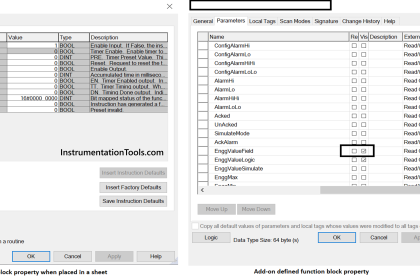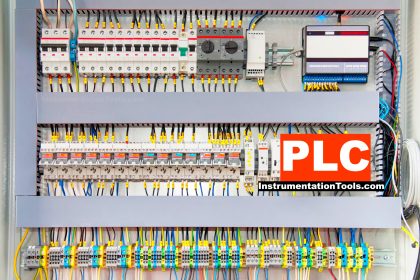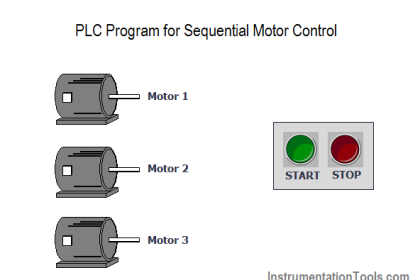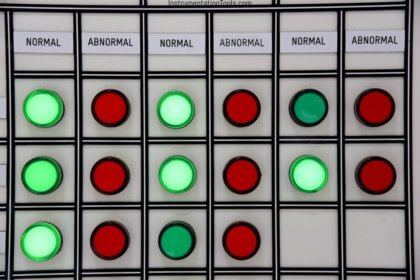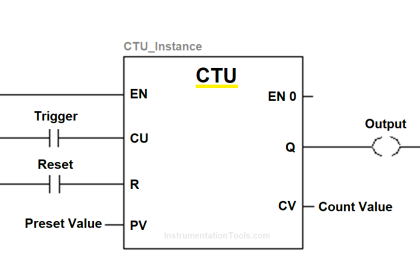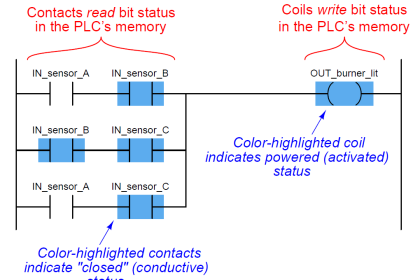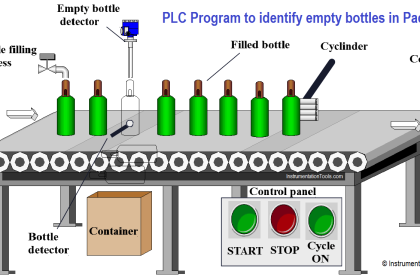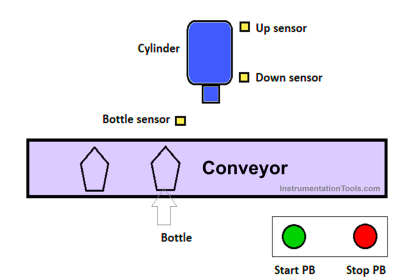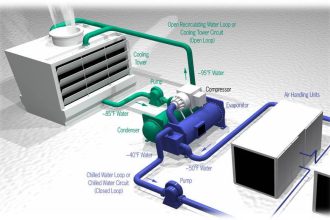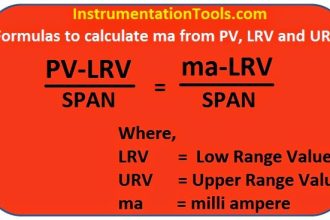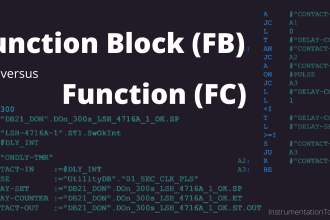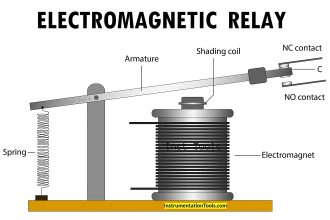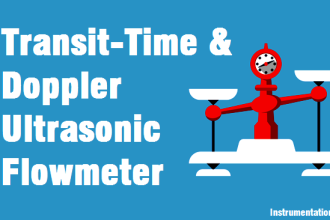In this article we will talk about decentralized Peripherals or distributed IOs, we are not going to look into the TIA Portal, we are just going to discuss what is Distributed IOs and why we need it.
Contents:
- What are External Peripherals or distributed IOs?
- A simple example to explain the need for Distributed IOs.
o 1 machine with a PLC on the machine.
o 1 machine with the PLC is far away in a safe place.
o 2 or more machines with the same PLC
o having an already installed machine with different IO modules (GSD files) - conclusion
External Peripherals
Distributed IO devices, are devices used in automation and control systems. They act as intermediaries between the central controller (PLC) and different sensors and actuators installed in your automation process. Imagine them as messengers that collect information from sensors and deliver commands to actuators.
Distributed IO
This distributed approach simplifies wiring, instead of having all the wires go directly to the PLC, you install these distributed IO devices at the machine side. They collect information from sensors (like temperature or movement) and send commands to actuators (like motors or valves). This makes the whole system work smoothly, with less wiring, and it’s also easier to manage and expand which results in improving system flexibility.
In the next section, we will use some examples to explain the idea and the need for the Distributed IO in a simpler way.
Simple example to explain the need for Distributed IO
Let’s assume that we have a production machine, this machine is controlled via a PLC, any type of PLC, see picture 1.
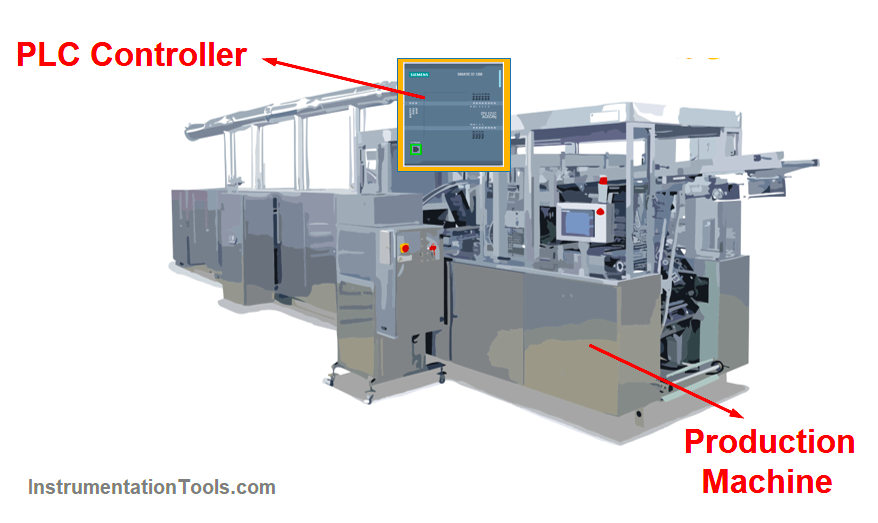
Picture 1. Production machine controlled via a PLC.
As you can see, the PLC controlling the machine is installed on the field at the machine side. As we know PLCs are designed to be able to operate at harsh environments, so it is not totally a bad idea to install the PLC at the machine side, as we know it will be able to withstand the different operating conditions related to the machine, wither it is high ambient temperature, humidity, vibration, etc.
Now, what if we need to modify our process and increase the control we have over the machine, meaning we need to increase the number of inputs and outputs of the machine, this will mean that we will need to get a bigger PLC with higher number of IOs, or at least we will need to add IOs modules to the current PLC.
You should know that adding extra IO modules to the current PLC will depend on the PLC you have chosen for your project because each PLC has the maximum number of IOs that you can add it to the PLC.
So if the extra number of IOs that we need will exceed the maximum number of IOs I can add to the PLC, then I will have to get a bigger PLC, and it will mean rewriting your software to the new PLC or at least migrating your project. See picture 2.

picture 2. Bigger PLC for new machine extension.
So, with the new extension, we had to get a bigger PLC.
NOW, we said that the PLC can be installed in the field and it is designed to withstand harsh environments, but usually, that is not what is done, and usually, the PLC is installed far away in a well-conditioned and protected place like an MCC room.
This means that every Input or output signal of our process will have to be connected from the machine side to the PLC is the MCC room, so if I have 100 IOs signals then I will have to pull 100 signal cables between the machine and the PLC. And if I need to make any future extension I will have to pull the extra new cables. See picture 3.
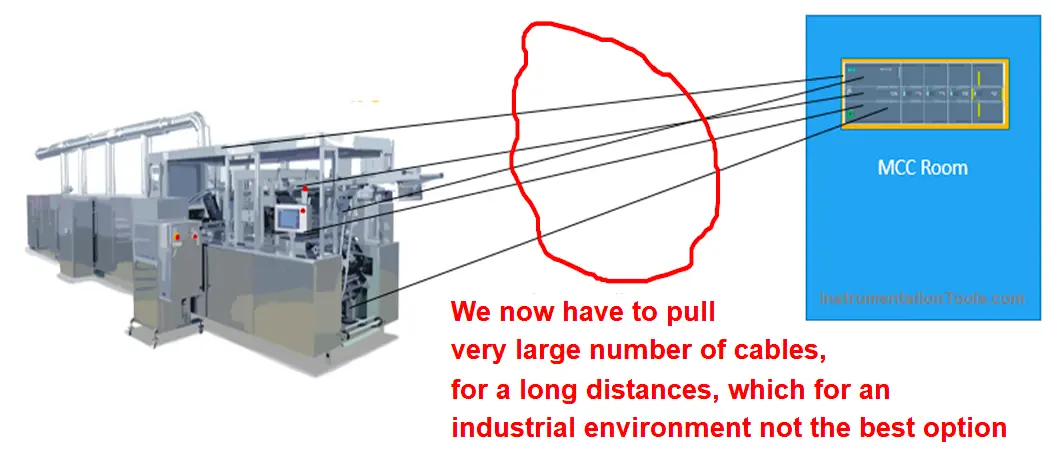
Picture 3. Installing the PLC inside the MCC room.
As you can see, we now have to pull a cable between the PLC and the machine for each IO signal that we have in our process. This can be acceptable in a small machine with a small number of IOs, but not so much with a large process that has many IOs.
Because this will include pulling a large number of cables, this will increase the cost of this process and also will introduce new problems that need to be taken care of, like cable raceways, EMC compatibility, cable trays, and more extra considerations.
And here is where the External Peripherals or Distributed IO modules become very useful. See picture 4.
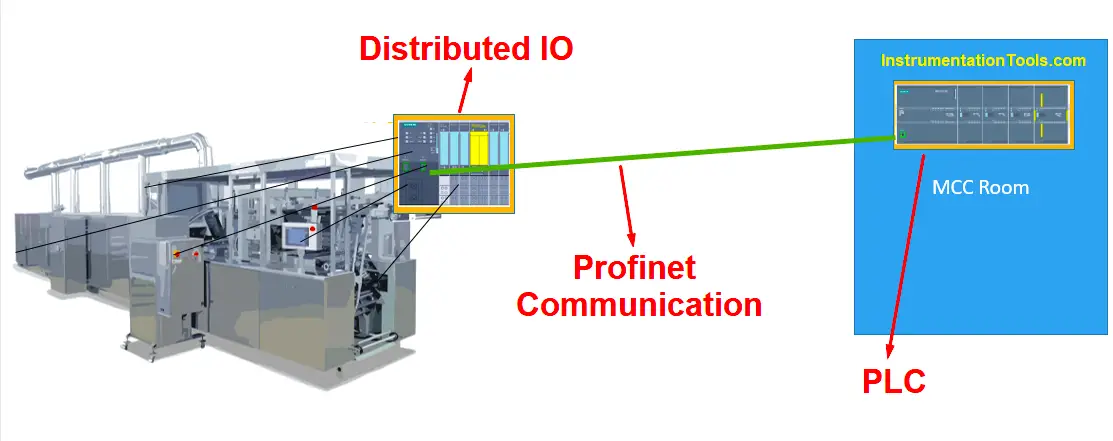
Picture 4. Using Distributed IO device.
A distributed IO module is simply an IO module that can be installed at the machine side to collect all inputs of the process and send it to the PLC and also gets the output signal from the PLC and sends it to related actuating devices.
As you can see from the picture, the connection between the PLC and the machine is now done by pulling a communication cable between the Distributed IO device and the PLC. Distributed IO devices have many communication capabilities, in our example, we assumed a Profinet communication, hence the green color.
Using a Distributed IO device will give you the advantage of extending your process IOs without needing to install a larger PLC. You will just add the new IOs to your device and the communication between the PLC is still the same using the Profinet or any other communication method.
You can even have a completely new machine controlled with the same PLC, you will just have to pull a new communication cable from the PLC to the new machine. See picture 5.
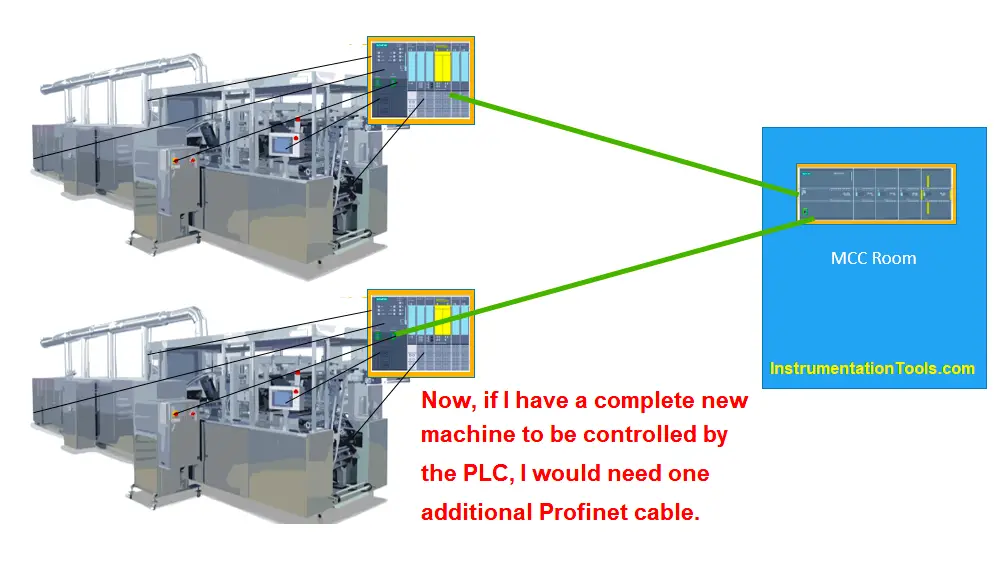
picture 5. Controlling 2 machines with the same PLC.
As you can see, to control a completely new machine with my PLC, I would only need one additional communication cable from the PLC and the machine. Offcourse you need to make sure that your PLC capabilities can handle processing and controlling the two machines.
One more thing, Distributed IOs can be used with different PLC brands, meaning I can use different brands of distributed IOs with Siemens PLC. See picture 6.
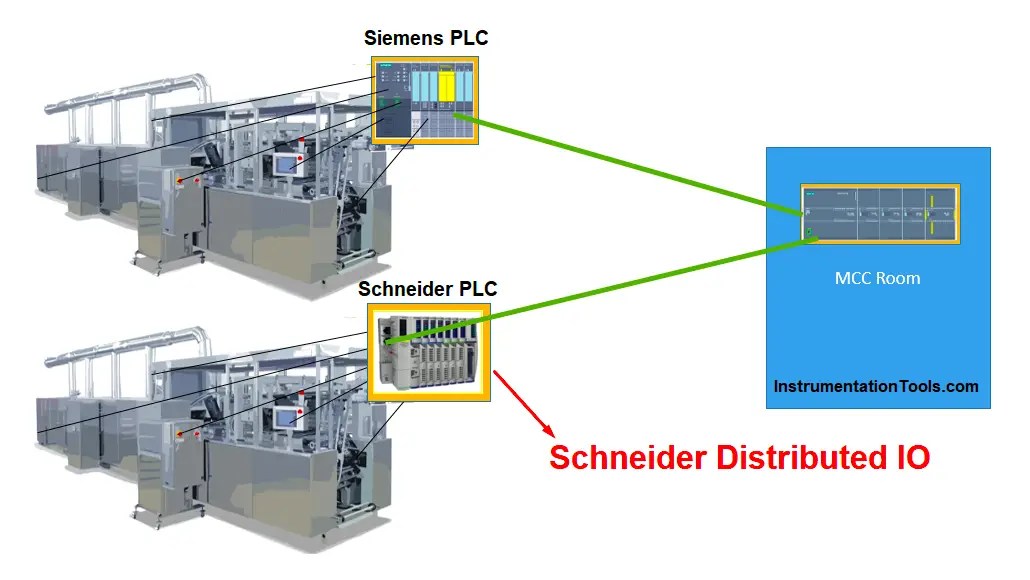
picture 6. Using different brands of Distributed IOs.
As you can see in the picture one machine is using a SIEMENS distributed IO device and the other machine is using a Schneider distributed IO device and both of them will be controlled via the same PLC.
Conclusion
- Distributed IO devices are used to extend the reach of a control system, allowing for the connection of a large number of sensors and actuators over long distances.
- Distributed IOs reduces the amount of wiring required compared to a traditional machine-PLC signal connection.
- It’s easy to add or remove devices in a distributed IOs system, making it highly scalable and reliable.
If you liked this article, then please subscribe to our YouTube Channel for Instrumentation, Electrical, PLC, and SCADA video tutorials.
You can also follow us on Facebook and Twitter to receive daily updates.
Read Next:
- PLC PID Controller Output Types
- Static and Temp Variables in PLC
- Power Supply Sizing for Systems
- How to Read the PLC Datasheet?
- Update the Firmware Version of PLC
